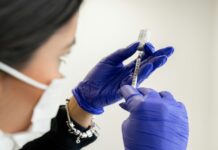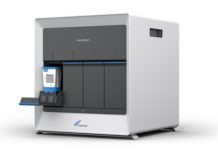Medical device manufacturers have historically prioritized creating devices that are both safe and effective. This focus remains a critical priority. However, there is an increasing push for these manufacturers to also integrate sustainability into their designs. The “Reimagining Sustainable Medtech” report by PA Consulting provides guidance on how to design for sustainability when developing medical devices. This report uses research on the sustainability impact of six continuous glucose monitors (CGMs) as a real-life example. This growing emphasis on sustainability is driven by stricter regulatory requirements and a shift in public opinion. Consumers are becoming more aware and critical of the environmental impact of the medical devices they use.
Elevated Legislation In Terms of Sustainability When It Comes To Medical Devices
Over the past two decades, the focus on environmental impact within the medical devices industry has progressively strengthened. The EU MDR 2017/745 and IVDR 2017/746 regulations incorporate environmental considerations into the medical device life cycle. These regulations, along with other EU directives, provide guidance on hazardous substances and waste management, aiming to promote sustainability, reduce environmental impact, and foster a circular economy throughout the medical device life cycle.
Although the primary focus of EU MDR and IVDR is on patient safety and the efficacy of medical devices, they implicitly include environmental aspects throughout the device life cycle. This encompasses areas such as materials selection, device design, manufacturing processes, packaging, labeling, and waste management. The General Safety and Performance Requirements (GSPR) outlined in MDR Annex I 14.7, for example, require manufacturers to identify and test procedures and measures to ensure their devices can be safely disposed of after use. This information must be included in the device’s instructions for use (IFU).
Additionally, directives like the Waste Electrical and Electronic Equipment (WEEE) Directive, the Restriction of Hazardous Substances (RoHS) Directive, and the Registration, Evaluation, Authorisation, and Restriction of Chemicals (REACH) Regulation offer comprehensive guidance to medical device manufacturers. These directives aim to promote resource efficiency and support the transition to a greener economy.
The WEEE Directive, initially enacted in 2003 and revised in 2012, imposes obligations on manufacturers, distributors, and consumers of medical devices to ensure the proper collection, recycling, and disposal of electronic equipment. The directive requires member states to establish collection systems for electronic waste, allowing consumers to return devices at the end of their life cycle. Manufacturers are responsible for financing and participating in this collection and recycling scheme, ensuring that discarded devices are managed in an environmentally friendly manner. The directive aims to minimize environmental pollution and resource depletion associated with improper disposal practices.
The RoHS Directive, another critical directive for sustainability, restricts the use of certain hazardous substances in the manufacturing of electrical and electronic equipment. Revised in 2011, it prohibits the presence of lead, cadmium, hexavalent chromium, mercury, polybrominated biphenyls (PBB), and polybrominated diphenyl ethers (PBDE) above specified thresholds in covered products. Manufacturers must ensure compliance with these substance restrictions through rigorous testing and documentation processes. Compliance with the RoHS Directive is mandatory for medical device manufacturers whose products are sold in the EU.
The REACH Regulation provides a comprehensive framework for managing risks associated with chemicals used in medical devices. It requires manufacturers to register substances produced or imported in quantities exceeding one ton per year with the European Chemicals Agency (ECHA). The regulation also authorizes ECHA to evaluate substances of concern and impose restrictions on their use if necessary to protect human health and the environment. This registration process promotes transparency and encourages the safe and sustainable use of chemicals in medical device manufacturing. While neither EU MDR nor IVDR explicitly references other regulations or directives, manufacturers must comply with national or local laws on disposal and recycling.
Guidance and Best Practices on Design In Terms of Sustainability
Safety and efficacy are paramount in medical device development, yet sustainable device design should be considered from the outset of the product development life cycle. Historically, discussions on medtech sustainability have centered on packaging and distribution rather than the environmental impact of the device itself. However, integrating sustainability into the design process requires a comprehensive approach.
One crucial decision is whether a device should be single-use or reusable. While reusable devices may seem more sustainable, they can require significant energy and material consumption to ensure they are contamination-free. Reusable devices must be collected, cleaned, repackaged, re-sterilized, and sometimes redistributed, which can offset the environmental benefits. The full life cycle of the product must be carefully evaluated to maximize sustainability. For instance, implantable devices and those intended for long-term use will likely remain single-use, as reusability offers no practical benefit.
End-of-life and disposal processes are also critical considerations. Many devices or specific components will eventually need to be retired. Specific disposal mechanisms may be required for certain device components, such as needles, due to potential biohazard risks, or batteries, due to electrical safety concerns. Recent supply chain innovations have shifted focus onto sustainable practices, even codified within the EU MDR – GSPR related to disposal.
The medtech industry has begun to perceive and implement sustainable supply chains differently. The COVID-19 pandemic prompted life sciences manufacturers to diversify and localize their supply and distribution networks as a precautionary measure. Companies now aim to balance costs and profits by using sustainable packaging and services. For example, they seek to deliver products on time to avoid costly expedited shipping fees, at predictable volumes to lower CO2 emissions and transportation costs, and in reusable or biodegradable packaging to reduce new packaging costs or penalties for pollution. Demonstrating sustainability has also become essential for winning tenders with hospitals or other life sciences partners.
Unfortunately, user perception of sustainability often does not align with reality. A perceived high product quality can lead users to believe a device is or should be reusable, even when this is not practical from a manufacturing or performance standpoint. This phenomenon, known as “greenwashing,” involves unsustainable practices masked by a sustainable appearance, such as eco-friendly language or aesthetics. Truly sustainable designs must address these user beliefs and demonstrate sustainability metrics through key performance indicators (KPIs) and evidence.
Sustainability Against Risk Management
Medical device manufacturers are obligated to minimize risks to patients and clinicians through design. Historically, this focus has resulted in product and packaging material selections prioritizing safety and profitability, often with little consideration for environmental impact. However, as sustainability becomes a regulatory requirement, manufacturers must innovate while maintaining safety and efficacy.
For example, transitioning from single-use to reusable devices introduces potential risks related to cleaning and re-sterilizing. Similarly, switching to more sustainable materials can present challenges in maintaining sterile barriers, shelf life, and protection against environmental factors. These considerations make seemingly minor changes complex and require careful assessment to ensure that risk is minimized.
Manufacturers must balance sustainability with risk management. Up to now, it has been easy for manufacturers to dismiss the high environmental impact of a device by claiming it is necessary for safety. However, as other manufacturers find more sustainable ways to achieve the same outcomes, regulators will be less likely to approve new designs with lower sustainability. Manufacturers must act now, prioritizing sustainability from the outset or risking rejection by regulators.
Despite this pressure, patient and clinician safety will always be the top priority. Sustainability must never compromise device safety and effectiveness. For instance, while reusable devices may reduce waste, the associated risks of cleaning and re-sterilizing must be carefully managed. Similarly, changing materials for sustainability must not compromise the device’s sterile barrier properties, reaction with the device, shelf life, or protection against environmental factors.
















